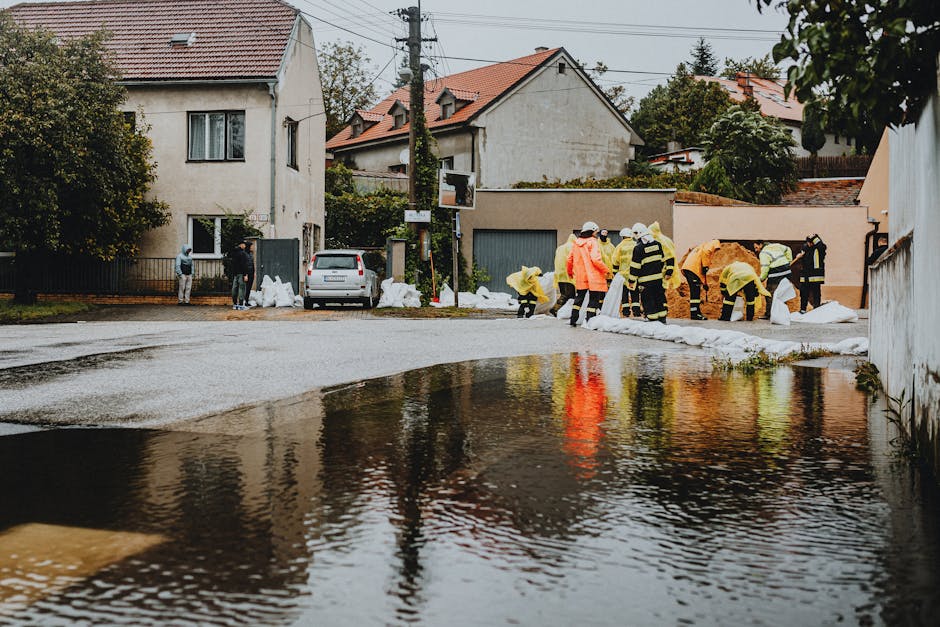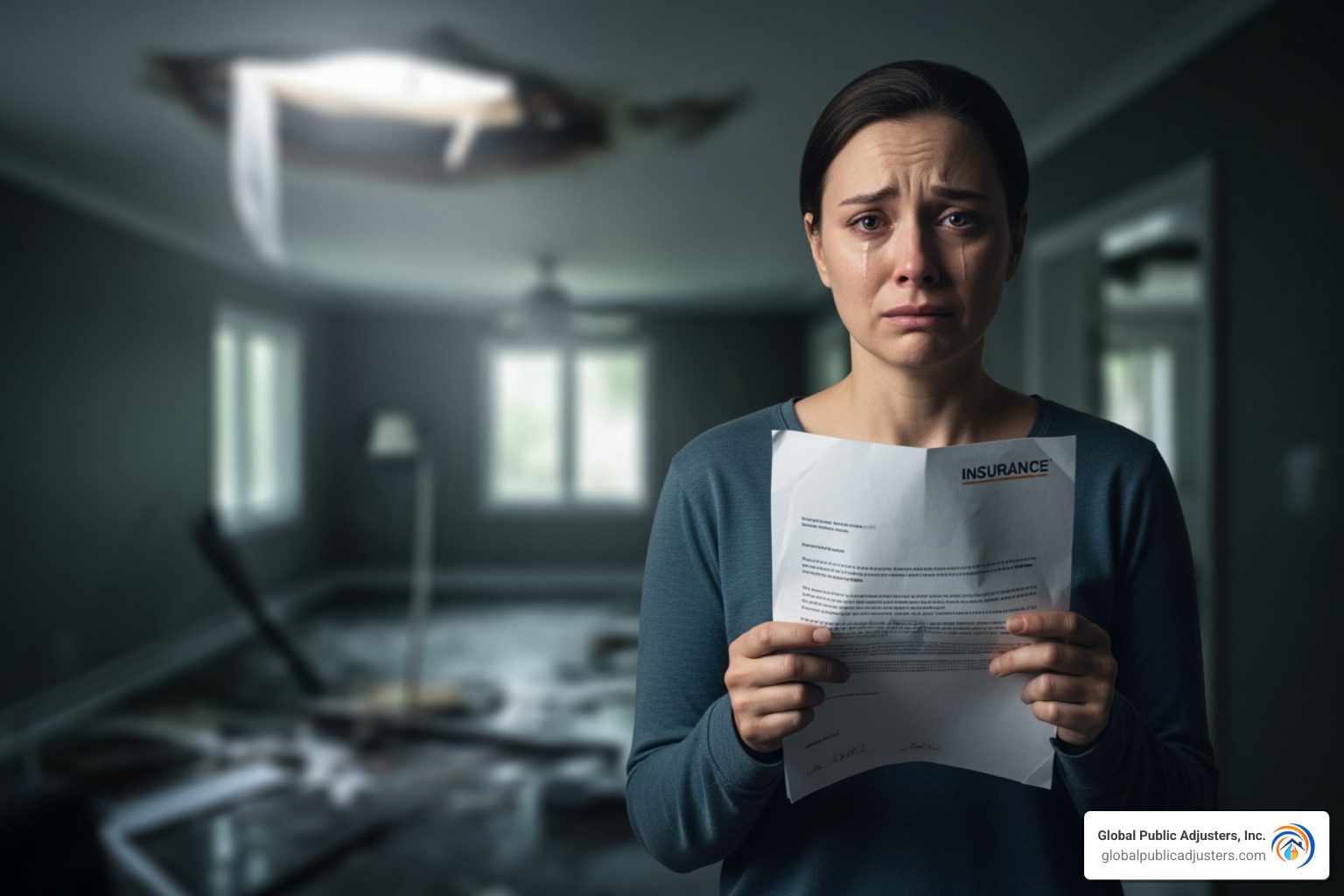Flood Damage Claims: Your #1 Essential Guide
Understanding Flood Damage Claims: What Every Property Owner Needs to Know
Flood damage claimsare insurance requests filed for losses caused by flooding—the number one natural disaster in the United States. Successfully navigating these claims can mean the difference between full recovery and financial devastation, as many property owners find too late that their standard homeowners insurance excludes flood damage entirely.
Quick Guide: What You Need to Know About Flood Damage Claims
Separate Coverage Required: Most homeowners insurance does NOT cover flood damage. You need a separate policy through the National Flood Insurance Program (NFIP) or a private insurer.
Act Fast: Contact your insurer immediately after a flood and document all damage before cleanup.
60-Day Deadline: You must file a Proof of Loss statement within 60 days of the flood.
Average Payout: Between 2016 and 2021, the average flood claim payout was $68,000.
Common Coverage: NFIP policies cover the building structure and contents but have limitations on basements and outdoor property.
Just one inch of floodwater can cause thousands of dollars in damage. The claims process can feel overwhelming, as insurers often deny or underpay claims due to insufficient documentation, policy exclusions, or missed deadlines. This guide walks you through everything you need to know about filing flood damage claims—from understanding your policy to appealing denials and working with professionals who can advocate on your behalf.

What is Flood Damage? The Critical Difference from Water Damage
Is the water in your home from a “flood” or “water damage”? This distinction is critical for getting your insurance claim paid.

Flood damageoccurs when water from an outside source invades normally dry land.According to FEMA, a flood is a “general and temporary condition of partial or complete inundation of 2 or more acres of normally dry land area or of 2 or more properties.” The source can be anoverflow of inland or tidal waters,rapid runoff of surface waters, or even mudflow. Essentially, flood damage comes from the ground up, such as from a storm surge, overflowing rivers, or heavy rain runoff.
Water damage from internal sourcesis different. This is caused by a burst pipe, a failed washing machine hose, a roof leak, or a broken water heater. Because the water source is inside or part of your property’s structure, it is considered water damage, not flood damage.
Why does this distinction matter?Your standard homeowners insurance typically covers internal water damage but specifically excludes flood damage. If rising floodwaters destroy your home, your regular policy won’t pay. You need a separate flood insurance policy for that.
Insurance companies are strict about this definition. If water came from outside and affected a large area, it’s a flood. If it came from your pipes or appliances, it’s water damage. Understanding which type you have is the first step in filing successfulflood damage claims.
The National Flood Insurance Program (NFIP): Your Primary Resource
For property owners in Florida and across the U.S., the National Flood Insurance Program (NFIP) is the primary source of flood coverage. Managed by FEMA, the NFIP was created to provide affordable flood insurance where private insurers could not.

You don’t buy policies from the government directly. Instead, you purchase them through private insurance companies in theWrite-Your-Own (WYO) program. These companies sell and service the policies, but FEMA sets the rates and backs them financially. With 4.7 million policyholders, the NFIP is the nation’s largest single-line insurance program.
NFIP policies offer two main protections:Building coveragefor your home’s structure (foundation, walls, electrical systems, built-in appliances) and optionalContents coveragefor personal belongings (furniture, clothing, electronics). You must specifically purchase contents coverage to protect your possessions.
What the NFIP Covers and Excludes
Understanding your NFIP policy’s limits is crucial. Policies cover direct physical loss from flooding, including thebuilding and contents(if purchased) anddebris removalcosts within your policy limits.
However, there are significant limitations:
- Basements: The NFIP provides onlylimited coverage for basements. It may cover major systems like furnaces and water heaters, but not finished elements like drywall, flooring, or furniture.
- Outdoor Property: Fences, pools, septic systems, and landscaping are not covered. Thelanditself is also excluded.
- Additional Living Expenses: The NFIP does not pay for hotel stays or temporary housing if your home is uninhabitable. Federal disaster assistance may be available for this, but only after a Presidential Disaster Declaration.
- Mold Damage: Mold is generally not covered if you fail to take reasonable steps to prevent it. You must act quickly to clean and dry your property. The EPA offers guidance on how tominimize mold growth and spread. An exception may apply if authorities prevented you from accessing your property.
Special Coverage: Increased Cost of Compliance (ICC)
ICC coverage is a valuable feature included in NFIP policies, providingup to $30,000to help you meet current building codes when you repair or rebuild. This is separate from your building coverage.
To qualify forIncreased Cost of Compliance Coverage, your property must be in aSpecial Flood Hazard Area (SFHA)and be declared substantially damaged (repair costs are 50% or more of its pre-flood market value). The funds can be used for mitigation measures like elevating your home, floodproofing, or relocation. When filingflood damage claims, ask your adjuster about ICC eligibility if your home has severe damage.
A Step-by-Step Guide to Filing Flood Damage Claims
Filingflood damage claimsis manageable if you follow a clear roadmap. These steps will guide you toward recovery.

Step 1: Immediate Actions and Documentation
First, ensure everyone is safe and do not return to your property until authorities give the all-clear. Then, act immediately.
- Contact your insurer right awayto report the flood. Have your policy number ready. The NFIP offers guidance onhow to start a flood insurance claim.
- Document everythingbefore you clean up. This is crucial. Take photos and videos of all damage, from wide shots to close-ups of specific items and their serial numbers. Create a detailed inventory of damaged property, noting what it was, when you bought it, and its cost. Keep samples of damaged materials like carpet or drywall for the adjuster.
- Mitigate further damageby starting cleanup to prevent mold. Throw away contaminated food, open windows, and use fans or dehumidifiers. However, do not discard major damaged items until an adjuster has seen them, unless they are a health hazard.
Step 2: The Adjuster Inspection and Proof of Loss
An adjuster should contact you within a few days to schedule an inspection. When they arrive, ask to see their Flood Control Number to verify they are authorized to handle NFIP claims. Be present for the inspection to point out all damage.
After the inspection, you must complete aProof of Loss. This is your official, sworn statement listing your damages and their value, supported by your documentation. As a FEMA memo on Proof of Loss Decision Upheld shows, this document is critical.
You have60 days from the date of the floodto submit your Proof of Loss. Missing this strict deadline is a common reason for claim denial.
During widespread disasters, you may qualify for anadvance paymentof up to $20,000 with proper documentation to help start your recovery. This advance is deducted from your final settlement.
Step 3: Understanding the Timeline and Deadlines for your flood damage claims
Mostflood damage claimstake4 to 8 weeksto process after you submit all documentation, though major disasters can cause delays. The most critical deadline is the60-day window to file your Proof of Loss. If you miss it, your insurer can legally deny your entire claim.
There is also astatute of limitationsfor filing a lawsuit if you disagree with your insurer’s decision, which varies by state. Clarify all deadlines with your insurer upfront.
It’s a common misconception that you need a Presidential Disaster Declaration to file a claim. This isnot required. If you have a flood policy and suffer flood damage, you should file a claim. However, a declaration does open up additional federal aid, so you canlearn about disaster assistanceand apply for it in addition to your insurance claim.
Common Reasons for Denied or Underpaid Claims (And What to Do)
A denial letter or a low settlement offer is a frustrating setback for anyone dealing withflood damage claims. Insurers often deny or underpay for several reasons.

Common reasons for denial include:
- Insufficient Documentation: A lack of photos, videos, or receipts to prove your losses.
- Policy Exclusions: The damage falls under a policy limitation, such as for basements or mold.
- Disputes Over Damage Assessment: The insurer’s adjuster values the damage much lower than your repair costs.
- Pre-existing Conditions: The insurer claims the damage existed before the flood or was due to poor maintenance.
- Missed Deadlines: Failure to submit the Proof of Loss form within the 60-day deadline.
What to do if your flood damage claim is denied or underpaid
A denial or low offer is not the final word. You have the right to fight back.
Review the Denial Letter: Your insurer must explain in writing why the claim was denied, citing specific policy language. Understand their reasoning to build your response.
Gather More Evidence: If the denial was for insufficient proof, get more documentation. Obtaindetailed estimates from multiple contractorsthat itemize flood-related repairs. Consider hiring an independent engineer for an expert report on the cause of damage.
File an Appeal: Submit a formal written appeal to your insurance company, addressing each reason for denial with your new evidence. If you have an NFIP policy and the insurer upholds the denial, you can appeal directly to FEMA within 60 days of the denial. FEMA provides a guide onAppealing Your Flood Insurance Claim (fema.gov).
Consider Legal Action: If appeals fail, an attorney specializing in property insurance can advise you on litigation. For more on this, see our guide onWhat to do When Your Home Insurance Claim is Denied.
Don’t accept an unfair outcome. You paid for protection, so hold your insurer accountable.
How an Experienced Public Adjuster Can Help
After a flood, fighting your insurance company overflood damage claimsis an added stress you don’t need. This is where an experienced public adjuster becomes your strongest ally.

Unlike the insurance company’s adjuster, a public adjuster works exclusively foryou, the policyholder. At Global Public Adjusters, Inc., we have over 50 years of experience representing Florida property owners, fighting to ensure they receive the maximum settlement they’re entitled to.
A public adjuster levels the playing field. We provide expertise in several key areas:
- Policy Interpretation: We analyze your complex flood policy to identify all available coverage and opportunities you might otherwise miss.
- Damage Assessment & Documentation: We conduct our own thorough inspection to find all damage, including hidden issues. We then compile a bulletproof package of evidence—detailed inventories, photos, and expert reports—to support your claim.
- Negotiation: We handle all communications with the insurer, using our deep knowledge of claim valuation and policy language to counter lowball offers and secure a fair settlement.
Most importantly, we manage the entire claims process, giving you back your time and peace of mind to focus on recovery. For more details, read our article onFour Ways a Public Adjuster Can Help with Your Flood Claim. We are your dedicated partners in recovery.
Frequently Asked Questions about Flood Damage Claims
After a flood, you’ll have many questions. Here are answers to some of the most common ones we’ve heard over our 50 years of handlingflood damage claims.
Can I get an advance on my flood insurance claim?
Yes. FEMA allows insurers to issue advance payments to help with immediate expenses. You may be able to getup to $5,000 without an adjuster’s visitorup to $20,000 with proper documentation. This advance is not extra money; it will be deducted from your final claim settlement, but it provides crucial funds when you need them most.
What happens if I miss the deadline to file a claim?
Missing deadlines can be fatal to your claim. The most critical is the60-day window to submit your Proof of Loss statement. If you miss this strict deadline, your insurer can deny your claim entirely, regardless of the damage. We’ve seen many valid claims denied for this reason alone. Additionally, astatute of limitationsapplies for filing a lawsuit, which varies by state. Treat all deadlines as non-negotiable.
Does flood insurance cover mold or debris removal?
This is a common point of confusion.
- Debris Removal: This isgenerally coveredby NFIP policies. The cost to remove flood-related debris from your property is typically included within your policy limits.
- Mold Coverage: This ishighly restrictive and usually excluded. Your policy requires you to take immediate steps to mitigate damage and prevent mold growth. If you fail to do so, any mold-related claim will likely be denied. There are rare exceptions, such as if authorities blocked access to your property. Your best strategy is to prevent mold by starting cleanup immediately. The EPA offers a helpfulguide to mold cleanup after disasters.
Conclusion: Take Control of Your Flood Claim Recovery
Recovering from a flood involves navigating a complex insurance system that isn’t always on your side. Theflood damage claimsprocess has strict deadlines, extensive paperwork, and adjusters working for the insurer’s interests. Denials and underpayments are common, leaving vulnerable property owners to face the financial toll alone.
But knowledge is power. You can take control of your recovery by following these key steps:
- Document Everything: Photos, videos, and detailed inventories are essential evidence. Your claim’s success depends on it.
- Understand Your Policy: Know your coverage, exclusions, and deadlines. The 60-day Proof of Loss deadline is non-negotiable.
- Don’t Accept an Unfair Denial: You have the right to appeal, gather more evidence, and fight for the settlement you deserve.
At Global Public Adjusters, Inc., we’ve spent over 50 years standing up for Florida property owners. We work exclusively for you—not the insurance company—and we don’t get paid unless you do.
If you’re struggling with yourflood damage claims, we’re here to help. We will interpret your policy, document your damages, and negotiate relentlessly to get you the full settlement you’re owed. You don’t have to face this alone. Contact us today for a free consultation.Get help with your Flood Damage Claims in Orlandoand take the first step toward recovery.



